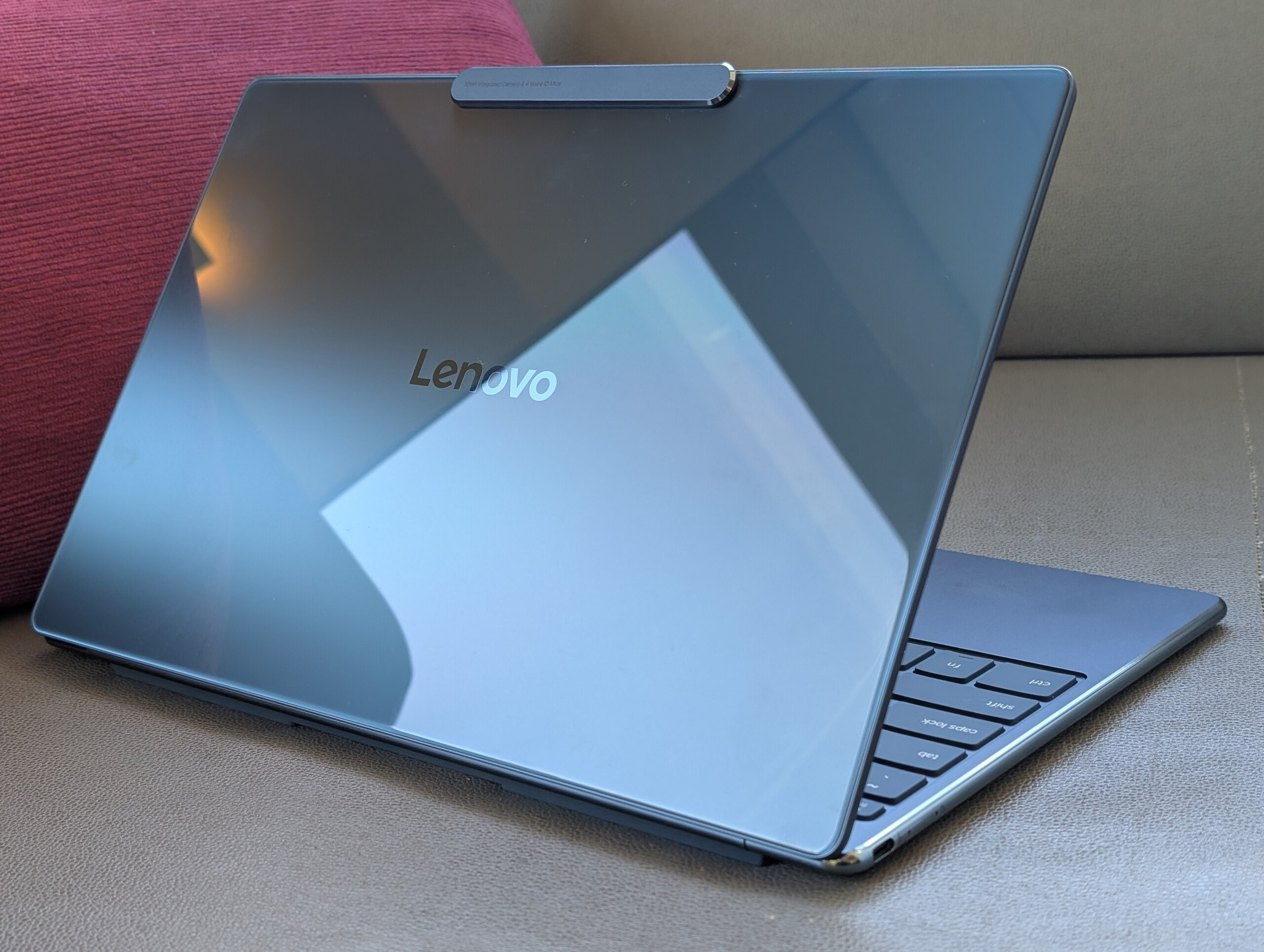
联想 Yoga Slim 9 14 10 代评测:首款配备 3200 万像素屏下网络摄像头的笔记本电脑
百万像素并不总是很重要。
Yoga Slim 9 14 G10 是联想迄今为止最闪亮的笔记本电脑,采用 2.5D 反光玻璃。其英特尔 CPU 和 3200 万像素 UDC 在纸面上听起来也令人惊叹,但网络摄像头爱好者有理由保持警惕。Allen Ngo, 👁 Allen Ngo (translated by DeepL / Ninh Duy) Published 🇺🇸 🇫🇷 ...
评语 - 顶级超极本,但网络摄像头并不出色
最新的联想 Yoga Slim 9 14 G10 具有许多优点,但也有一些明显的缺点。它的最大特点包括 4K OLED 触摸屏、舒适的键盘按键,以及英特尔 Lunar Lake CPU 带来的与尺寸相当的良好性能和电池续航时间。不可否认,它的外观也很出众,外层玻璃、超窄边框和圆润的屏幕边角在视觉上将这款旗舰机型与竞争对手区分开来。
不过,考虑到 1900 美元的零售价,许多小细节就难以忽视了。OLED 屏幕并不像宣传的那样明亮,不支持 M.2 2280 固态硬盘,端口选择也比其他大多数 14 英寸子笔记本更加有限。也许最令人失望的是,显示屏下的 3200 万像素网络摄像头有点令人失望,尤其是它是该机型的一大广告亮点。 HP EliteBook 845 G11或 OmniBook Ultra 14系列,都有较低的 500 万像素或 900 万像素网络摄像头,但图像质量更高,硬件功能也可能更理想,而且价位相近。
Pros
Cons
价格和供应情况
可能的替代品比较
Image | Model / Review | Price | Weight | Height | Display |
|---|---|---|---|---|---|
| Lenovo Yoga Slim 9 14ILL10 Intel Core Ultra 7 258V ⎘ Intel Arc Graphics 140V ⎘ 32 GB Memory, 1024 GB SSD | Amazon: 1. $55.00 Laptop Keyboard for Lenovo Y... 2. $55.00 Laptop Keyboard for Lenovo Y... 3. $50.00 Laptop Keyboard for Lenovo Y... List Price: 1900 USD | 1.2 kg | 14.55 mm | 14.00" 3840x2400 323 PPI OLED | |
| Lenovo Yoga Pro 7 14ASP G9 AMD Ryzen AI 9 365 ⎘ AMD Radeon 880M ⎘ 32 GB Memory, 1024 GB SSD | Amazon: 1. $969.99 Lenovo Yoga Pro 7 14AHP9-202... 2. $2,049.00 Lenovo Yoga Pro 9i 16"" Lapt... 3. $15.99 2 Pack Tempered Glass Screen... List Price: 1599€ | 1.5 kg | 18 mm | 14.50" 3072x1920 250 PPI OLED | |
| Asus Vivobook S 14 OLED S5406SA Intel Core Ultra 5 226V ⎘ Intel Arc Graphics 130V ⎘ 16 GB Memory, 512 GB SSD | Amazon: 1. $1,159.00 ASUS Vivobook S 14 Copilot+ ... 2. $899.99 ASUS Vivobook S 14 OLED Slim... 3. $1,094.16 ASUS Vivobook S 14 OLED Slim... List Price: 1099€ | 1.3 kg | 15.9 mm | 14.00" 1920x1200 162 PPI OLED | |
| HP OmniBook Ultra 14 AMD Ryzen AI 9 HX 375 ⎘ AMD Radeon 890M ⎘ 32 GB Memory, 2048 GB SSD | Amazon: List Price: 1030 USD | 1.5 kg | 16.5 mm | 14.00" 2240x1400 189 PPI IPS | |
| Dell XPS 14 2024 OLED Intel Core Ultra 7 155H ⎘ NVIDIA GeForce RTX 4050 Laptop GPU ⎘ 32 GB Memory, 1024 GB SSD | Amazon: $1,175.00 List Price: 2949€ | 1.8 kg | 19 mm | 14.50" 3200x2000 260 PPI OLED | |
| Samsung Galaxy Book4 Pro 14 Intel Core Ultra 7 155H ⎘ Intel Arc 8-Core iGPU ⎘ 16 GB Memory, 512 GB SSD | Amazon: 1. $1,169.97 SAMSUNG 14' Galaxy Book4 Pro... 2. $1,289.00 SAMSUNG 14" Galaxy Book4 Pro... 3. $1,319.99 SAMSUNG Galaxy Book4 Pro Bus... List Price: 1900€ | 1.2 kg | 11.6 mm | 14.00" 2880x1800 243 PPI OLED |
联想在 2025 年 CES 上发布了一系列新产品,从Legion Go S 到焕然一新的 Yoga Book 9i 双屏幕。仅仅过了一个月,其中许多新品就已经上架,包括我们今天评测的 Yoga Slim 9 14ILL10(或 Yoga Slim 9 14 Gen 10)。
我们的测试机为高配,配备酷睿 Ultra 7 258V Lunar Lake 处理器、32 GB 内存和 1 TB NVMe 固态硬盘,零售价约为 1900 美元。低端产品则采用酷睿 Ultra 7 256V,2400p OLED 触摸屏保持不变。
Yoga Slim 9 的替代产品包括其他高端多媒体子笔记本,如戴尔 XPS 14 惠普 OmniBook Ultra 14 华硕 Zenbook 14 系列 或三星Galaxy Book4 Pro 14 。
更多联想评论:
» Notebookcheck多媒体笔记本电脑Top 10排名
» Notebookcheck游戏笔记本电脑Top 10排名
» Notebookcheck低价办公/商务笔记本电脑Top 10排名
» Notebookcheck高端办公/商务笔记本电脑Top 10排名
» Notebookcheck工作站笔记本电脑Top 10排名
» Notebookcheck亚笔记本电脑Top 10排名
» Notebookcheck超级本产品Top 10排名
» Notebookcheck变形本产品Top 10排名
» Notebookcheck平板电脑Top 10排名
» Notebookcheck智能手机Top 10排名
» Notebookcheck评测过最出色的笔记本电脑屏幕
» Notebookcheck售价500欧元以下笔记本电脑Top 10排名
» Notebookcheck售价300欧元以下笔记本电脑Top 10排名
规格
外壳 - 通过 MIL-STD-810H 认证
Yoga Slim 9 14 Gen 10 的设计是 Yoga Slim 9i 14 Gen 9 的进化版。 Yoga Slim 9i 14 Gen 9.光亮的 2.5D 玻璃外盖重新回归,以区别于竞争对手,而闪亮的边缘和边角则与 ThinkPad 较暗淡的哑光设计形成鲜明对比。关闭时,机身从各个角度看都非常反光,无论好坏都很吸引眼球。
至于制造质量,我们的测试机没有发现明显的缺陷,在试图扭转底座或盖子时也没有吱吱作响的问题。与底座相比,盖子的扭转幅度更大,但这也在意料之中。外盖毕竟是玻璃材质,用户在使用时要多加小心,避免刮伤和留下指纹。
更窄的边框和更薄的重新设计使得该机型比前一代 9 代机型更小更轻。 更小更轻。.事实上,这是目前最轻的 14 英寸笔记本电脑之一,仅次于 LG Gram 系列.
连接性 - 端口比以前更少
即使考虑到 14 英寸的小尺寸,端口选项也令人失望。其他同尺寸笔记本电脑,如 Yoga Pro 7 14 G9 或 Vivobook S 14 除 USB-C 接口外,还集成了USB-A 和 HDMI,而我们的 Yoga Slim 9 14 却只有 USB-C。甚至没有 3.5 毫米音频插孔。
| Networking | |
| iperf3 transmit AXE11000 | |
| Lenovo Yoga Pro 7 14ASP G9 | |
| Asus Vivobook S 14 OLED S5406SA | |
| Dell XPS 14 2024 OLED | |
| Samsung Galaxy Book4 Pro 14 | |
| Lenovo Yoga Slim 9 14ILL10 | |
| HP OmniBook Ultra 14 | |
| iperf3 receive AXE11000 | |
| Asus Vivobook S 14 OLED S5406SA | |
| Lenovo Yoga Pro 7 14ASP G9 | |
| Dell XPS 14 2024 OLED | |
| Samsung Galaxy Book4 Pro 14 | |
| Lenovo Yoga Slim 9 14ILL10 | |
| HP OmniBook Ultra 14 | |
| iperf3 transmit AXE11000 6GHz | |
| HP OmniBook Ultra 14 | |
| Lenovo Yoga Slim 9 14ILL10 | |
| iperf3 receive AXE11000 6GHz | |
| HP OmniBook Ultra 14 | |
| Lenovo Yoga Slim 9 14ILL10 | |
网络摄像头
3200 万像素网络摄像头所生成的图像清晰度明显高于大多数其他型号的 100 万像素、200 万像素或 500 万像素网络摄像头。不过,它的主要问题是色彩不佳,尤其是在白平衡、色温或曝光方面。尽管在同类产品中,它的图像相对清晰,但这些缺点确实影响了整体图像质量。
遗憾的是,尽管传感器的分辨率非常高,但视频仍然仅限于 1440p30。
没有红外或物理网络摄像头快门。摄像头可以通过电子方式关闭。
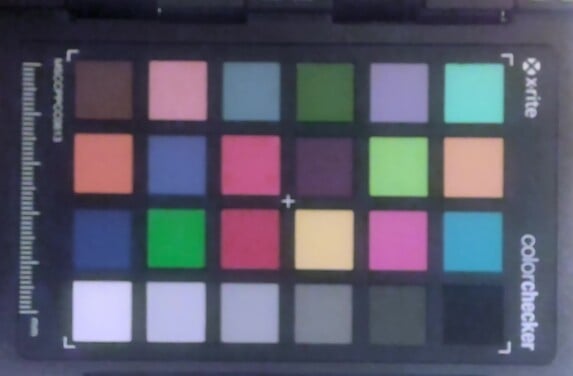
维护
可持续性
联想宣称,底盖采用了 50% 的回收铝,键帽采用了 50% 的消费后成分(PCC)回收塑料,其他各种部件采用了 30% 至 90% 的 PCC 回收塑料。包装不含任何塑料。
配件和保修
包装盒内除了交流适配器和文件外,没有其他附件。如果在美国购买,制造商通常提供一年有限保修。
输入设备 - 舒适的按键和紧凑的点击板
键盘
主观感觉上,键盘比老款 Yoga 和廉价 IdeaPad 机型的软键更坚固,反馈更清晰。联想重新设计了按键,更新了剪刀式开关,键程为 1.5 毫米。因此,按回车键或空格键时的咔嗒声更大了,这一点我们在去年的 Yoga Slim 7 15 Aura上也发现了这一点。
今年的新设计是沿右侧边缘增加了一列辅助按键,取代了专用的扬声器格栅。这些全尺寸按键可以在不同的电源配置文件、蓝光减弱模式和自定义快速启动键之间快速切换。虽然它们很容易被误触,但却非常实用。
触摸板
显示屏 - 一应俱全
作为联想的旗舰机型之一,Yoga Slim 9 14 标配了市场上最新的 OLED 显示屏。触摸屏支持 4K+ 分辨率、120 Hz 原生刷新率、DCI-P3 色彩、HDR 模式、快速响应时间和低至 60 Hz 的自适应刷新率。这是目前 14 英寸笔记本电脑上最漂亮的屏幕之一。华硕 VivoBook S 14 或三星 Book4 Pro 14 等同类产品的 OLED 屏幕都是如此。 三星Galaxy Book4 Pro 14 等竞争产品上的 OLED 屏幕比较常见,但它们的原始分辨率通常较低。
不足之处包括不支持自适应同步或低于 60 Hz 的自适应刷新率,而这本可以进一步改善电池寿命。
| |||||||||||||||||||||||||
Brightness Distribution: 95 %
Center on Battery: 371.8 cd/m²
Contrast: ∞:1 (Black: 0 cd/m²)
ΔE Color 4.32 | 0.5-29.43 Ø4.87, calibrated: 2.18
ΔE Greyscale 0.6 | 0.5-98 Ø5.1
87.6% AdobeRGB 1998 (Argyll 2.2.0 3D)
100% sRGB (Argyll 2.2.0 3D)
97.7% Display P3 (Argyll 2.2.0 3D)
Gamma: 2.2
| Lenovo Yoga Slim 9 14ILL10 LEN140WQ+, OLED, 3840x2400, 14", 120 Hz | Lenovo Yoga Pro 7 14ASP G9 LEN145WQ+, OLED, 3072x1920, 14.5", 120 Hz | HP OmniBook Ultra 14 BOE0C9E, IPS, 2240x1400, 14", 60 Hz | Dell XPS 14 2024 OLED SDC41A2, OLED, 3200x2000, 14.5", 120 Hz | Samsung Galaxy Book4 Pro 14 ATNA40CU07-0, OLED, 2880x1800, 14", 120 Hz | Asus VivoBook S 14 OLED M5406WA ATNA40CT02-0 (SDC41A0), OLED, 1920x1200, 14", 60 Hz | |
|---|---|---|---|---|---|---|
| Display | 0% | -18% | 0% | -1% | 4% | |
| Display P3 Coverage | 97.7 | 98 0% | 67.1 -31% | 98.5 1% | 97 -1% | 99.9 2% |
| sRGB Coverage | 100 | 99.9 0% | 99 -1% | 100 0% | 100 0% | 100 0% |
| AdobeRGB 1998 Coverage | 87.6 | 88.1 1% | 68.9 -21% | 87.2 0% | 85.2 -3% | 97.2 11% |
| Response Times | 56% | -4085% | 104% | 34% | -8% | |
| Response Time Grey 50% / Grey 80% * | 0.67 ? | 0.44 ? 34% | 35.9 ? -5258% | 0.7 ? -4% | 0.83 ? -24% | 1.3 ? -94% |
| Response Time Black / White * | 0.93 ? | 0.61 ? 34% | 28 ? -2911% | 0.77 ? 17% | 0.69 ? 26% | 1.2 ? -29% |
| PWM Frequency | 120 ? | 240 ? 100% | 480 300% | 240 ? 100% | 240 ? 100% | |
| Screen | 6% | -28% | -34% | -25% | 13% | |
| Brightness middle | 371.8 | 400 8% | 359.5 -3% | 351 -6% | 392 5% | 385 4% |
| Brightness | 382 | 403 5% | 361 -5% | 353 -8% | 398 4% | 382 0% |
| Brightness Distribution | 95 | 97 2% | 92 -3% | 97 2% | 97 2% | 95 0% |
| Black Level * | 0.27 | 0.03 | ||||
| Colorchecker dE 2000 * | 4.32 | 1 77% | 1.64 62% | 1.7 61% | 1.3 70% | 1.99 54% |
| Colorchecker dE 2000 max. * | 6.7 | 2.8 58% | 4.68 30% | 2.2 67% | 3.2 52% | 3.69 45% |
| Colorchecker dE 2000 calibrated * | 2.18 | 0.97 56% | 0.8 63% | 1.79 18% | ||
| Greyscale dE 2000 * | 0.6 | 1.3 -117% | 2.6 -333% | 3.1 -417% | 2.3 -283% | 0.8 -33% |
| Gamma | 2.2 100% | 2.23 99% | 2.22 99% | 2.12 104% | 2.24 98% | 2.204 100% |
| CCT | 6437 101% | 6586 99% | 6388 102% | 6616 98% | 6517 100% | 6474 100% |
| Contrast | 1331 | 12833 | ||||
| Total Average (Program / Settings) | 21% /
17% | -1377% /
-702% | 23% /
6% | 3% /
-4% | 3% /
6% |
* ... smaller is better
Display Response Times
| ↔ Response Time Black to White | ||
|---|---|---|
| 0.93 ms ... rise ↗ and fall ↘ combined | ↗ 0.44 ms rise | |
| ↘ 0.49 ms fall | ||
| The screen shows very fast response rates in our tests and should be very well suited for fast-paced gaming. In comparison, all tested devices range from 0.1 (minimum) to 240 (maximum) ms. » 2 % of all devices are better. This means that the measured response time is better than the average of all tested devices (20.8 ms). | ||
| ↔ Response Time 50% Grey to 80% Grey | ||
| 0.67 ms ... rise ↗ and fall ↘ combined | ↗ 0.32 ms rise | |
| ↘ 0.35 ms fall | ||
| The screen shows very fast response rates in our tests and should be very well suited for fast-paced gaming. In comparison, all tested devices range from 0.165 (minimum) to 636 (maximum) ms. » 1 % of all devices are better. This means that the measured response time is better than the average of all tested devices (32.5 ms). | ||
Screen Flickering / PWM (Pulse-Width Modulation)
| Screen flickering / PWM detected | 120 Hz Amplitude: 70 % | ≤ 100 % brightness setting | |
The display backlight flickers at 120 Hz (worst case, e.g., utilizing PWM) Flickering detected at a brightness setting of 100 % and below. There should be no flickering or PWM above this brightness setting. The frequency of 120 Hz is very low, so the flickering may cause eyestrain and headaches after extended use. In comparison: 53 % of all tested devices do not use PWM to dim the display. If PWM was detected, an average of 8516 (minimum: 5 - maximum: 343500) Hz was measured. | |||
遗憾的是,尽管联想宣传在 SDR 模式和 HDR 模式下的最大亮度分别为 600 尼特和 750 尼特,但我们测试设备的最大亮度仅为 380 尼特左右。即使在 HDR 模式下运行HDR 亮度测试,我们的最高亮度也保持不变。 在 HDR 模式下。我们仔细检查了设置,包括 Vantage、Windows 和英特尔 GCC 上的任何自适应亮度功能,但结果没有变化,说明这可能是模型的一个错误。因此,室外能见度比应有的要差,最终与其他 OLED 亚笔记本电脑的结果较为一致。
性能 - 原始性能的平衡
测试条件
在运行下面的基准测试之前,我们将联想 Vantage 设置为性能模式。与老款联想笔记本不同,Vantage 中的三个电源配置文件(省电模式、自适应模式和性能模式)与标准 Windows 配置文件(省电模式、平衡模式和性能模式)直接相关。更改一端的配置文件将自动更改另一端的配置文件。
处理器
Core Ultra 7 258V在 CPU 性能方面仅比去年的 Alder LakeCore Ultra 7 155U 快约 10%至 15%。由于英特尔在 Lunar Lake 的重点是提高每瓦性能、嵌入式 RAM、NPU 改进和集成 Arc GPU,而不是原始处理能力,因此这种微弱的提升是意料之中的。不过,在循环运行 CineBench R15 xT 时,性能还是比较稳定的,没有出现大的节流问题。
降级到 酷睿至尊 7 256V配置对性能的影响应仅为 5% 至 10%。 戴尔 XPS 13 9350.
Cinebench R15 Multi Loop
Cinebench R23: Multi Core | Single Core
Cinebench 2024: CPU Multi Core | CPU Single Core
Cinebench R20: CPU (Multi Core) | CPU (Single Core)
Cinebench R15: CPU Multi 64Bit | CPU Single 64Bit
Blender: v2.79 BMW27 CPU
7-Zip 18.03: 7z b 4 | 7z b 4 -mmt1
Geekbench 6.4: Multi-Core | Single-Core
Geekbench 5.5: Multi-Core | Single-Core
HWBOT x265 Benchmark v2.2: 4k Preset
LibreOffice : 20 Documents To PDF
R Benchmark 2.5: Overall mean
| Cinebench 2024 / CPU Multi Core | |
| HP OmniBook Ultra 14 | |
| Lenovo Yoga Pro 7 14ASP G9 | |
| Lenovo Yoga 7 2-in-1 14AHP9 | |
| Asus ZenBook Duo OLED UX8406CA | |
| Lenovo Yoga Slim 9 14ILL10 | |
| Lenovo ThinkPad T14s G4-21F8002TGE | |
| Asus Vivobook S 14 OLED S5406SA | |
| Average Intel Core Ultra 7 258V (406 - 660, n=18) | |
| Lenovo ThinkPad T14 G5 21ML005JGE | |
| Cinebench 2024 / CPU Single Core | |
| Asus ZenBook Duo OLED UX8406CA | |
| Lenovo Yoga Slim 9 14ILL10 | |
| Average Intel Core Ultra 7 258V (107.8 - 123, n=12) | |
| Lenovo Yoga Pro 7 14ASP G9 | |
| Asus Vivobook S 14 OLED S5406SA | |
| Lenovo Yoga 7 2-in-1 14AHP9 | |
| Lenovo ThinkPad T14s G4-21F8002TGE | |
| HP OmniBook Ultra 14 | |
| Lenovo ThinkPad T14 G5 21ML005JGE | |
Cinebench R23: Multi Core | Single Core
Cinebench 2024: CPU Multi Core | CPU Single Core
Cinebench R20: CPU (Multi Core) | CPU (Single Core)
Cinebench R15: CPU Multi 64Bit | CPU Single 64Bit
Blender: v2.79 BMW27 CPU
7-Zip 18.03: 7z b 4 | 7z b 4 -mmt1
Geekbench 6.4: Multi-Core | Single-Core
Geekbench 5.5: Multi-Core | Single-Core
HWBOT x265 Benchmark v2.2: 4k Preset
LibreOffice : 20 Documents To PDF
R Benchmark 2.5: Overall mean
* ... smaller is better
AIDA64: FP32 Ray-Trace | FPU Julia | CPU SHA3 | CPU Queen | FPU SinJulia | FPU Mandel | CPU AES | CPU ZLib | FP64 Ray-Trace | CPU PhotoWorxx
| Performance Rating | |
| HP OmniBook Ultra 14 | |
| Lenovo Yoga Pro 7 14ASP G9 | |
| Dell XPS 14 2024 OLED | |
| Lenovo Yoga Slim 9 14ILL10 | |
| Average Intel Core Ultra 7 258V | |
| Asus Vivobook S 14 OLED S5406SA | |
| Samsung Galaxy Book4 Pro 14 | |
| AIDA64 / FP32 Ray-Trace | |
| HP OmniBook Ultra 14 | |
| Lenovo Yoga Pro 7 14ASP G9 | |
| Lenovo Yoga Slim 9 14ILL10 | |
| Asus Vivobook S 14 OLED S5406SA | |
| Dell XPS 14 2024 OLED | |
| Average Intel Core Ultra 7 258V (9215 - 12781, n=14) | |
| Samsung Galaxy Book4 Pro 14 | |
| AIDA64 / FPU Julia | |
| HP OmniBook Ultra 14 | |
| Lenovo Yoga Pro 7 14ASP G9 | |
| Dell XPS 14 2024 OLED | |
| Lenovo Yoga Slim 9 14ILL10 | |
| Asus Vivobook S 14 OLED S5406SA | |
| Average Intel Core Ultra 7 258V (48758 - 63401, n=14) | |
| Samsung Galaxy Book4 Pro 14 | |
| AIDA64 / CPU SHA3 | |
| HP OmniBook Ultra 14 | |
| Lenovo Yoga Pro 7 14ASP G9 | |
| Dell XPS 14 2024 OLED | |
| Lenovo Yoga Slim 9 14ILL10 | |
| Average Intel Core Ultra 7 258V (2271 - 2817, n=14) | |
| Asus Vivobook S 14 OLED S5406SA | |
| Samsung Galaxy Book4 Pro 14 | |
| AIDA64 / CPU Queen | |
| HP OmniBook Ultra 14 | |
| Lenovo Yoga Pro 7 14ASP G9 | |
| Dell XPS 14 2024 OLED | |
| Samsung Galaxy Book4 Pro 14 | |
| Average Intel Core Ultra 7 258V (49510 - 49818, n=14) | |
| Lenovo Yoga Slim 9 14ILL10 | |
| Asus Vivobook S 14 OLED S5406SA | |
| AIDA64 / FPU SinJulia | |
| HP OmniBook Ultra 14 | |
| Lenovo Yoga Pro 7 14ASP G9 | |
| Dell XPS 14 2024 OLED | |
| Samsung Galaxy Book4 Pro 14 | |
| Lenovo Yoga Slim 9 14ILL10 | |
| Average Intel Core Ultra 7 258V (4103 - 4440, n=14) | |
| Asus Vivobook S 14 OLED S5406SA | |
| AIDA64 / FPU Mandel | |
| HP OmniBook Ultra 14 | |
| Lenovo Yoga Pro 7 14ASP G9 | |
| Lenovo Yoga Slim 9 14ILL10 | |
| Asus Vivobook S 14 OLED S5406SA | |
| Average Intel Core Ultra 7 258V (25361 - 33565, n=14) | |
| Dell XPS 14 2024 OLED | |
| Samsung Galaxy Book4 Pro 14 | |
| AIDA64 / CPU AES | |
| HP OmniBook Ultra 14 | |
| Lenovo Yoga Pro 7 14ASP G9 | |
| Dell XPS 14 2024 OLED | |
| Samsung Galaxy Book4 Pro 14 | |
| Average Intel Core Ultra 7 258V (37728 - 40753, n=14) | |
| Lenovo Yoga Slim 9 14ILL10 | |
| Asus Vivobook S 14 OLED S5406SA | |
| AIDA64 / CPU ZLib | |
| HP OmniBook Ultra 14 | |
| Lenovo Yoga Pro 7 14ASP G9 | |
| Dell XPS 14 2024 OLED | |
| Lenovo Yoga Slim 9 14ILL10 | |
| Average Intel Core Ultra 7 258V (499 - 632, n=14) | |
| Asus Vivobook S 14 OLED S5406SA | |
| Samsung Galaxy Book4 Pro 14 | |
| AIDA64 / FP64 Ray-Trace | |
| HP OmniBook Ultra 14 | |
| Lenovo Yoga Pro 7 14ASP G9 | |
| Lenovo Yoga Slim 9 14ILL10 | |
| Asus Vivobook S 14 OLED S5406SA | |
| Dell XPS 14 2024 OLED | |
| Average Intel Core Ultra 7 258V (4891 - 6930, n=14) | |
| Samsung Galaxy Book4 Pro 14 | |
| AIDA64 / CPU PhotoWorxx | |
| Lenovo Yoga Slim 9 14ILL10 | |
| Average Intel Core Ultra 7 258V (51323 - 54971, n=14) | |
| Dell XPS 14 2024 OLED | |
| Lenovo Yoga Pro 7 14ASP G9 | |
| Asus Vivobook S 14 OLED S5406SA | |
| HP OmniBook Ultra 14 | |
| Samsung Galaxy Book4 Pro 14 | |
压力测试
运行苛刻负载时,核心温度相对较低。在运行 Prime95 压力测试时,CPU 的主频为 3.4 GHz,功耗为 39 W,温度为 73 C。在速度更快、采用 AMD 技术的 OmniBook Ultra 14相比之下,核心温度要高得多,接近 100 摄氏度。
如下截图所示,在运行《赛博朋克 2077》 时,平衡模式和性能模式的性能略有不同。在 "性能 "模式下,CPU 时钟频率和功耗会稍高一些,而核心温度则会从 58 摄氏度明显升至 70 摄氏度。
| CPU 平均时钟 (GHz) | GPU 时钟 (MHz) | CPU 平均温度 (°C) | |
| 系统闲置 | -- | -- | 36 |
| Prime95 压力 | 3.4 | -- | 73 |
| Prime95 + FurMark Stress | 3.0 | 1050 | 70 |
| 赛博朋克 2077》压力(平衡/适应模式) | 1.3 | 1950 | 58 |
| 赛博朋克 2077》压力(性能模式) | 1.5 | 1950 | 70 |
系统性能
PCMark 结果领先于即将推出的 Yoga Slim 9 14i Gen 9,但落后于最新的搭载 Zen 5 的竞争对手,如 惠普 OmniBook Ultra 14由于 AMD 硬件提供了更快的处理器性能。
CrossMark: Overall | Productivity | Creativity | Responsiveness
WebXPRT 3: Overall
WebXPRT 4: Overall
Mozilla Kraken 1.1: Total
| PCMark 10 / Score | |
| HP OmniBook Ultra 14 | |
| Lenovo Yoga Pro 7 14ASP G9 | |
| Average Intel Core Ultra 7 258V, Intel Arc Graphics 140V (6265 - 7314, n=14) | |
| Lenovo Yoga Slim 9 14ILL10 | |
| Dell XPS 14 2024 OLED | |
| Asus Vivobook S 14 OLED S5406SA | |
| Samsung Galaxy Book4 Pro 14 | |
| PCMark 10 / Essentials | |
| Lenovo Yoga Pro 7 14ASP G9 | |
| HP OmniBook Ultra 14 | |
| Samsung Galaxy Book4 Pro 14 | |
| Average Intel Core Ultra 7 258V, Intel Arc Graphics 140V (9295 - 11467, n=14) | |
| Lenovo Yoga Slim 9 14ILL10 | |
| Dell XPS 14 2024 OLED | |
| Asus Vivobook S 14 OLED S5406SA | |
| PCMark 10 / Productivity | |
| HP OmniBook Ultra 14 | |
| Lenovo Yoga Pro 7 14ASP G9 | |
| Average Intel Core Ultra 7 258V, Intel Arc Graphics 140V (7357 - 9619, n=14) | |
| Dell XPS 14 2024 OLED | |
| Asus Vivobook S 14 OLED S5406SA | |
| Samsung Galaxy Book4 Pro 14 | |
| Lenovo Yoga Slim 9 14ILL10 | |
| PCMark 10 / Digital Content Creation | |
| HP OmniBook Ultra 14 | |
| Lenovo Yoga Pro 7 14ASP G9 | |
| Average Intel Core Ultra 7 258V, Intel Arc Graphics 140V (9333 - 10048, n=14) | |
| Lenovo Yoga Slim 9 14ILL10 | |
| Asus Vivobook S 14 OLED S5406SA | |
| Dell XPS 14 2024 OLED | |
| Samsung Galaxy Book4 Pro 14 | |
| CrossMark / Overall | |
| HP OmniBook Ultra 14 | |
| Lenovo Yoga Slim 9 14ILL10 | |
| Average Intel Core Ultra 7 258V, Intel Arc Graphics 140V (1590 - 1742, n=13) | |
| Dell XPS 14 2024 OLED | |
| Lenovo Yoga Pro 7 14ASP G9 | |
| Samsung Galaxy Book4 Pro 14 | |
| Asus Vivobook S 14 OLED S5406SA | |
| CrossMark / Productivity | |
| Lenovo Yoga Slim 9 14ILL10 | |
| Average Intel Core Ultra 7 258V, Intel Arc Graphics 140V (1558 - 1684, n=13) | |
| HP OmniBook Ultra 14 | |
| Dell XPS 14 2024 OLED | |
| Samsung Galaxy Book4 Pro 14 | |
| Asus Vivobook S 14 OLED S5406SA | |
| Lenovo Yoga Pro 7 14ASP G9 | |
| CrossMark / Creativity | |
| Lenovo Yoga Pro 7 14ASP G9 | |
| Lenovo Yoga Slim 9 14ILL10 | |
| HP OmniBook Ultra 14 | |
| Average Intel Core Ultra 7 258V, Intel Arc Graphics 140V (1727 - 1977, n=13) | |
| Dell XPS 14 2024 OLED | |
| Samsung Galaxy Book4 Pro 14 | |
| Asus Vivobook S 14 OLED S5406SA | |
| CrossMark / Responsiveness | |
| HP OmniBook Ultra 14 | |
| Samsung Galaxy Book4 Pro 14 | |
| Dell XPS 14 2024 OLED | |
| Lenovo Yoga Slim 9 14ILL10 | |
| Average Intel Core Ultra 7 258V, Intel Arc Graphics 140V (1251 - 1411, n=13) | |
| Asus Vivobook S 14 OLED S5406SA | |
| Lenovo Yoga Pro 7 14ASP G9 | |
| WebXPRT 3 / Overall | |
| HP OmniBook Ultra 14 | |
| Lenovo Yoga Pro 7 14ASP G9 | |
| Lenovo Yoga Slim 9 14ILL10 | |
| Asus Vivobook S 14 OLED S5406SA | |
| Dell XPS 14 2024 OLED | |
| Average Intel Core Ultra 7 258V, Intel Arc Graphics 140V (219 - 314, n=12) | |
| Samsung Galaxy Book4 Pro 14 | |
| WebXPRT 4 / Overall | |
| Lenovo Yoga Slim 9 14ILL10 | |
| HP OmniBook Ultra 14 | |
| Average Intel Core Ultra 7 258V, Intel Arc Graphics 140V (199.5 - 291, n=14) | |
| Asus Vivobook S 14 OLED S5406SA | |
| Lenovo Yoga Pro 7 14ASP G9 | |
| Dell XPS 14 2024 OLED | |
| Samsung Galaxy Book4 Pro 14 | |
| Mozilla Kraken 1.1 / Total | |
| Samsung Galaxy Book4 Pro 14 | |
| Dell XPS 14 2024 OLED | |
| Asus Vivobook S 14 OLED S5406SA | |
| Average Intel Core Ultra 7 258V, Intel Arc Graphics 140V (468 - 559, n=14) | |
| Lenovo Yoga Slim 9 14ILL10 | |
| Lenovo Yoga Pro 7 14ASP G9 | |
| HP OmniBook Ultra 14 | |
* ... smaller is better
| PCMark 10 Score | 6663 points | |
Help | ||
| AIDA64 / Memory Copy | |
| Average Intel Core Ultra 7 258V (107682 - 114336, n=14) | |
| Lenovo Yoga Slim 9 14ILL10 | |
| Asus Vivobook S 14 OLED S5406SA | |
| Dell XPS 14 2024 OLED | |
| HP OmniBook Ultra 14 | |
| Lenovo Yoga Pro 7 14ASP G9 | |
| Samsung Galaxy Book4 Pro 14 | |
| AIDA64 / Memory Read | |
| HP OmniBook Ultra 14 | |
| Lenovo Yoga Pro 7 14ASP G9 | |
| Samsung Galaxy Book4 Pro 14 | |
| Average Intel Core Ultra 7 258V (82846 - 89417, n=14) | |
| Lenovo Yoga Slim 9 14ILL10 | |
| Dell XPS 14 2024 OLED | |
| Asus Vivobook S 14 OLED S5406SA | |
| AIDA64 / Memory Write | |
| Lenovo Yoga Slim 9 14ILL10 | |
| Average Intel Core Ultra 7 258V (109734 - 117935, n=14) | |
| Asus Vivobook S 14 OLED S5406SA | |
| Lenovo Yoga Pro 7 14ASP G9 | |
| HP OmniBook Ultra 14 | |
| Dell XPS 14 2024 OLED | |
| Samsung Galaxy Book4 Pro 14 | |
| AIDA64 / Memory Latency | |
| Samsung Galaxy Book4 Pro 14 | |
| Dell XPS 14 2024 OLED | |
| HP OmniBook Ultra 14 | |
| Lenovo Yoga Pro 7 14ASP G9 | |
| Average Intel Core Ultra 7 258V (95 - 101.1, n=14) | |
| Lenovo Yoga Slim 9 14ILL10 | |
| Asus Vivobook S 14 OLED S5406SA | |
* ... smaller is better
| DPC Latencies / LatencyMon - interrupt to process latency (max), Web, Youtube, Prime95 | |
| Dell XPS 14 2024 OLED | |
| Samsung Galaxy Book4 Pro 14 | |
| Lenovo Yoga Pro 7 14ASP G9 | |
| Lenovo Yoga Slim 9 14ILL10 | |
| Asus Vivobook S 14 OLED S5406SA | |
* ... smaller is better
存储设备
我们的测试机配备了 42 毫米短 三星 PM9C1aPCIe4 x4 NVMe 固态硬盘,可持续传输速率约为 6200 MB/s。标配的专用散热垫可帮助底部面板散热。性能仅略低于其他高端笔记本电脑和游戏笔记本电脑上常见的三星 PM9A1。
| Drive Performance Rating - Percent | |
| HP OmniBook Ultra 14 | |
| Samsung Galaxy Book4 Pro 14 | |
| Dell XPS 14 2024 OLED | |
| Lenovo Yoga Pro 7 14ASP G9 | |
| Lenovo Yoga Slim 9 14ILL10 | |
| Asus Vivobook S 14 OLED S5406SA | |
* ... smaller is better
Disk Throttling: DiskSpd Read Loop, Queue Depth 8
图形处理器性能
弧形 Arc 140V比刚使用一年的 Arc 8快了约 50%。性能的提升足以让它与竞争对手 Radeon 880M或 890M 相同。
| 电源配置文件 | 图形得分 | 物理得分 | 综合得分 |
| 性能模式 | 10006 | 21483 | 3592 |
| 平衡模式 | 8875 (-11%) | 21234 (-1%) | 3263 (-9%) |
| 电池电量 | 9962 (-0%) | 20904 (-0%) | 3443 (-0%) |
请注意,根据我们上面的Fire Strike 结果表,在平衡模式下运行将影响图形性能约 10%。电池电量可提供全部性能。
| 3DMark 11 Performance | 11945 points | |
| 3DMark Cloud Gate Standard Score | 34254 points | |
| 3DMark Fire Strike Score | 9109 points | |
| 3DMark Time Spy Score | 4470 points | |
Help | ||
* ... smaller is better
游戏性能
虽然去年 Alder Lake CPU 中集成的 Arc 8 有点令人失望,但最新的 Lunar Lake Arc 140V 则有了很大改进,与最新的 Radeon 880M 或 890M 系列更具竞争力。事实上,在《最终幻想 15》和《赛博朋克 2077》等一些测试过的游戏中,英特尔 GPU 的性能略微超过 AMD 的两种选择。AMD 仍在大多数游戏中遥遥领先,但随着 Lunar Lake 系列的推出,英特尔和 AMD 之间的 iGPU 性能差距确实缩小了。
| Tiny Tina's Wonderlands | |
| 1280x720 Lowest Preset (DX12) | |
| HP OmniBook Ultra 14 | |
| Lenovo Yoga 7 2-in-1 14AHP9 | |
| Lenovo Yoga Slim 9 14ILL10 | |
| Average Intel Arc Graphics 140V (96.9 - 111.4, n=5) | |
| 1920x1080 Low Preset (DX12) | |
| HP OmniBook Ultra 14 | |
| Lenovo Yoga Slim 9 14ILL10 | |
| Average Intel Arc Graphics 140V (56.5 - 72.2, n=4) | |
| Lenovo Yoga 7 2-in-1 14AHP9 | |
| 1920x1080 Medium Preset (DX12) | |
| HP OmniBook Ultra 14 | |
| Lenovo Yoga Slim 9 14ILL10 | |
| Average Intel Arc Graphics 140V (42.1 - 55.1, n=4) | |
| Lenovo Yoga 7 2-in-1 14AHP9 | |
| 1920x1080 High Preset (DX12) | |
| HP OmniBook Ultra 14 | |
| Lenovo Yoga Slim 9 14ILL10 | |
| Average Intel Arc Graphics 140V (28.2 - 36, n=4) | |
| Lenovo Yoga 7 2-in-1 14AHP9 | |
| 1920x1080 Badass Preset (DX12) | |
| HP OmniBook Ultra 14 | |
| Lenovo Yoga Slim 9 14ILL10 | |
| Average Intel Arc Graphics 140V (23.6 - 28, n=4) | |
| Lenovo Yoga 7 2-in-1 14AHP9 | |
Cyberpunk 2077 ultra FPS Chart
| low | med. | high | ultra | |
|---|---|---|---|---|
| GTA V (2015) | 151.1 | 149.8 | 72.3 | 27.6 |
| Dota 2 Reborn (2015) | 98.6 | 90.3 | 68.5 | 84.7 |
| Final Fantasy XV Benchmark (2018) | 86.7 | 47.9 | 35.7 | |
| X-Plane 11.11 (2018) | 45.7 | 36.4 | 37.5 | |
| Far Cry 5 (2018) | 94 | 51 | 48 | 44 |
| Strange Brigade (2018) | 237 | 82.8 | 70.4 | 59.4 |
| Tiny Tina's Wonderlands (2022) | 72.2 | 55.1 | 35.4 | 27.6 |
| F1 22 (2022) | 104.5 | 95.1 | 69.3 | 21.1 |
| Baldur's Gate 3 (2023) | 39.5 | 32.5 | 28.1 | 26.3 |
| Cyberpunk 2077 2.2 Phantom Liberty (2023) | 48 | 38 | 33.3 | 29.2 |
排放量
系统噪音
在低负载和中低负载时,风扇噪音很小。例如,在运行 3DMark 06 的第一个基准场景时,风扇噪音在测试的大部分时间里都徘徊在 31 dB(A)左右,然后在场景尾部急剧上升到 36 dB(A)。30 dB(A)的低噪音范围通常被认为是无伤大雅的,在典型的办公室或咖啡厅环境中基本不会被察觉。
游戏时,当设置为平衡模式或性能模式时,风扇噪音会徘徊在 36 dB(A) 以下,比其他 14 英寸笔记本电脑(如惠普 OmniBook Ultra 14 或戴尔 XPS 14 2024 OPS)更安静。 戴尔 XPS 14 2024 OLED等其他 14 英寸笔记本电脑。不过,这些替代品的速度也更快,因此风扇更安静与处理器速度更慢有关。
Noise Level
| Idle |
| 26 / 26 / 26 dB(A) |
| Load |
| 35.8 / 39.6 dB(A) |
 | ||
30 dB silent 40 dB(A) audible 50 dB(A) loud |
||
min: | ||
| Lenovo Yoga Slim 9 14ILL10 Arc 140V, Core Ultra 7 258V, Samsung PM9C1a MZAL81T0HDLB | Lenovo Yoga Pro 7 14ASP G9 Radeon 880M, Ryzen AI 9 365, Micron 2550 1TB MTFDKCD1T0TGE | Asus Vivobook S 14 OLED S5406SA Arc 130V, Core Ultra 5 226V, Micron 2500 MTFDKBA512QGN | HP OmniBook Ultra 14 Radeon 890M, Ryzen AI 9 HX 375, SK hynix PC801 HFS002TEJ9X101N | Dell XPS 14 2024 OLED NVIDIA GeForce RTX 4050 Laptop GPU, Ultra 7 155H, Samsung PM9A1 MZVL21T0HCLR | Samsung Galaxy Book4 Pro 14 Arc 8-Core, Ultra 7 155H, Samsung PM9B1 512GB MZVL4512HBLU | |
|---|---|---|---|---|---|---|
| Noise | -1% | 4% | 0% | -2% | 6% | |
| off / environment * | 25.4 | 23.8 6% | 24.2 5% | 23.8 6% | 24.3 4% | 24.5 4% |
| Idle Minimum * | 26 | 23.8 8% | 24.2 7% | 24.9 4% | 24.3 7% | 24.5 6% |
| Idle Average * | 26 | 23.8 8% | 24.2 7% | 24.9 4% | 26.5 -2% | 24.5 6% |
| Idle Maximum * | 26 | 23.8 8% | 24.2 7% | 24.9 4% | 28.5 -10% | 24.5 6% |
| Load Average * | 35.8 | 44.6 -25% | 28.8 20% | 32.9 8% | 37 -3% | 32.4 9% |
| Cyberpunk 2077 ultra * | 35.8 | 35.9 -0% | 37.6 -5% | 40.9 -14% | ||
| Load Maximum * | 39.6 | 44.6 -13% | 45.6 -15% | 43 -9% | 43.3 -9% | 36.7 7% |
| Witcher 3 ultra * | 39.1 | 36.7 |
* ... smaller is better
温度
与其他 14 英寸子笔记本电脑相比,Yoga Pro 7 14 G9 的表面温度普遍低于预期。键盘面板和底盖的热点温度分别略高于 34 摄氏度和 41 摄氏度,而 Yoga Pro 7 14 G9 和 Vivobook S 14 OLED 的温度则超过 42 摄氏度甚至 49 摄氏度。 Vivobook S 14 OLED和 Vivobook S 14 OLED 的温度分别为 42 摄氏度和 49 摄氏度。这些热点也都位于机身的后半部分,因此在正常使用过程中不会出现温升问题。
(+) The maximum temperature on the upper side is 34.2 °C / 94 F, compared to the average of 35.9 °C / 97 F, ranging from 21.4 to 59 °C for the class Subnotebook.
(±) The bottom heats up to a maximum of 40.6 °C / 105 F, compared to the average of 39.3 °C / 103 F
(+) In idle usage, the average temperature for the upper side is 23 °C / 73 F, compared to the device average of 30.8 °C / 87 F.
(+) 3: The average temperature for the upper side is 26.9 °C / 80 F, compared to the average of 30.8 °C / 87 F for the class Subnotebook.
(+) The palmrests and touchpad are cooler than skin temperature with a maximum of 25.2 °C / 77.4 F and are therefore cool to the touch.
(+) The average temperature of the palmrest area of similar devices was 28.2 °C / 82.8 F (+3 °C / 5.4 F).
| Lenovo Yoga Slim 9 14ILL10 Intel Core Ultra 7 258V, Intel Arc Graphics 140V | Lenovo Yoga Pro 7 14ASP G9 AMD Ryzen AI 9 365, AMD Radeon 880M | Asus Vivobook S 14 OLED S5406SA Intel Core Ultra 5 226V, Intel Arc Graphics 130V | HP OmniBook Ultra 14 AMD Ryzen AI 9 HX 375, AMD Radeon 890M | Dell XPS 14 2024 OLED Intel Core Ultra 7 155H, NVIDIA GeForce RTX 4050 Laptop GPU | Samsung Galaxy Book4 Pro 14 Intel Core Ultra 7 155H, Intel Arc 8-Core iGPU | |
|---|---|---|---|---|---|---|
| Heat | -13% | -9% | -19% | -10% | -8% | |
| Maximum Upper Side * | 34.2 | 42 -23% | 38.4 -12% | 40.4 -18% | 40.5 -18% | 41 -20% |
| Maximum Bottom * | 40.6 | 40.6 -0% | 49.7 -22% | 43.6 -7% | 42.6 -5% | 44.2 -9% |
| Idle Upper Side * | 24.8 | 28.2 -14% | 25.1 -1% | 31 -25% | 26.9 -8% | 25.3 -2% |
| Idle Bottom * | 25.6 | 28.9 -13% | 25.8 -1% | 32.2 -26% | 27.8 -9% | 26.2 -2% |
* ... smaller is better
Lenovo Yoga Slim 9 14ILL10 audio analysis
(+) | speakers can play relatively loud (84.9 dB)
Bass 100 - 315 Hz
(±) | reduced bass - on average 7.2% lower than median
(±) | linearity of bass is average (7.1% delta to prev. frequency)
Mids 400 - 2000 Hz
(+) | balanced mids - only 1.7% away from median
(+) | mids are linear (3.1% delta to prev. frequency)
Highs 2 - 16 kHz
(+) | balanced highs - only 1.5% away from median
(+) | highs are linear (3.8% delta to prev. frequency)
Overall 100 - 16.000 Hz
(+) | overall sound is linear (7.1% difference to median)
Compared to same class
» 1% of all tested devices in this class were better, 1% similar, 98% worse
» The best had a delta of 5%, average was 19%, worst was 53%
Compared to all devices tested
» 1% of all tested devices were better, 0% similar, 99% worse
» The best had a delta of 4%, average was 24%, worst was 134%
Apple MacBook Pro 16 2021 M1 Pro audio analysis
(+) | speakers can play relatively loud (84.7 dB)
Bass 100 - 315 Hz
(+) | good bass - only 3.8% away from median
(+) | bass is linear (5.2% delta to prev. frequency)
Mids 400 - 2000 Hz
(+) | balanced mids - only 1.3% away from median
(+) | mids are linear (2.1% delta to prev. frequency)
Highs 2 - 16 kHz
(+) | balanced highs - only 1.9% away from median
(+) | highs are linear (2.7% delta to prev. frequency)
Overall 100 - 16.000 Hz
(+) | overall sound is linear (4.6% difference to median)
Compared to same class
» 0% of all tested devices in this class were better, 0% similar, 100% worse
» The best had a delta of 5%, average was 18%, worst was 45%
Compared to all devices tested
» 0% of all tested devices were better, 0% similar, 100% worse
» The best had a delta of 4%, average was 24%, worst was 134%
能源管理 - 每瓦特高性能
耗电量
由于高分辨率 OLED 面板的要求较高,台式机空转时的功耗在 5 W 到 12 W 之间,高于平均水平。不过,超高效的 Lunar Lake CPU 可以在运行苛刻负载时弥补这一不足,其总体功耗与酷睿 i7-1260P 2023 Yoga 9i 14 代 8 相似,但图形性能明显更快。
当 CPU 处于满载状态时,我们可以测量到小型(约 5.5 x 5.5 x 2.8 厘米)65 W USB-C 交流适配器的最大功耗为 62 W。如果同时运行要求较高的负载,充电速度会明显减慢,因为即使是游戏也需要 50 W 以上的功率。
| Off / Standby | |
| Idle | |
| Load |
|
Key:
min: | |
| Lenovo Yoga Slim 9 14ILL10 Core Ultra 7 258V, Arc 140V, Samsung PM9C1a MZAL81T0HDLB, OLED, 3840x2400, 14" | Lenovo Yoga Pro 7 14ASP G9 Ryzen AI 9 365, Radeon 880M, Micron 2550 1TB MTFDKCD1T0TGE, OLED, 3072x1920, 14.5" | Asus Vivobook S 14 OLED S5406SA Core Ultra 5 226V, Arc 130V, Micron 2500 MTFDKBA512QGN, OLED, 1920x1200, 14" | HP OmniBook Ultra 14 Ryzen AI 9 HX 375, Radeon 890M, SK hynix PC801 HFS002TEJ9X101N, IPS, 2240x1400, 14" | Dell XPS 14 2024 OLED Ultra 7 155H, NVIDIA GeForce RTX 4050 Laptop GPU, Samsung PM9A1 MZVL21T0HCLR, OLED, 3200x2000, 14.5" | Samsung Galaxy Book4 Pro 14 Ultra 7 155H, Arc 8-Core, Samsung PM9B1 512GB MZVL4512HBLU, OLED, 2880x1800, 14" | |
|---|---|---|---|---|---|---|
| Power Consumption | -25% | 19% | -4% | -50% | -5% | |
| Idle Minimum * | 5.6 | 5.5 2% | 2.7 52% | 2.7 52% | 8.1 -45% | 5.7 -2% |
| Idle Average * | 6.7 | 7.6 -13% | 6.7 -0% | 5.4 19% | 9.9 -48% | 8.7 -30% |
| Idle Maximum * | 12.4 | 7.9 36% | 6.9 44% | 5.5 56% | 10.4 16% | 8.9 28% |
| Load Average * | 38.1 | 77.9 -104% | 34.5 9% | 67.4 -77% | 75.6 -98% | 44.5 -17% |
| Cyberpunk 2077 ultra external monitor * | 50.6 | 61.5 -22% | 41.9 17% | 67.8 -34% | ||
| Cyberpunk 2077 ultra * | 51.1 | 63 -23% | 43 16% | 67.9 -33% | ||
| Load Maximum * | 61.5 | 94.8 -54% | 62.7 -2% | 68.3 -11% | 107.1 -74% | 65.2 -6% |
| Witcher 3 ultra * | 65.6 | 36.9 |
* ... smaller is better
Power Consumption Cyberpunk / Stress Test
Power Consumption external Monitor
电池寿命
尽管两者的电池容量几乎相同,但运行时间明显长于采用 AMD 技术的 Yoga Pro 7 14ASP G9。我们可以记录下近 16 小时的 WLAN 实际浏览时间,这与竞争对手华硕 Vivobook S 14 OLED 也能提供的时间相近。在 Alder Lake 和 Lunar Lake 之间,电池续航时间的大幅提升是显而易见的。
使用附带的交流适配器从空闲状态充至满电仅需不到 2 小时。
| Lenovo Yoga Slim 9 14ILL10 Core Ultra 7 258V, Arc 140V, 75 Wh | Lenovo Yoga Pro 7 14ASP G9 Ryzen AI 9 365, Radeon 880M, 73 Wh | Asus Vivobook S 14 OLED S5406SA Core Ultra 5 226V, Arc 130V, 75 Wh | HP OmniBook Ultra 14 Ryzen AI 9 HX 375, Radeon 890M, 68 Wh | Dell XPS 14 2024 OLED Ultra 7 155H, NVIDIA GeForce RTX 4050 Laptop GPU, 69.5 Wh | Samsung Galaxy Book4 Pro 14 Ultra 7 155H, Arc 8-Core, 63 Wh | |
|---|---|---|---|---|---|---|
| Battery Runtime | -52% | -8% | -11% | -58% | -53% | |
| Reader / Idle | 1401 | 2196 57% | ||||
| WiFi v1.3 | 946 | 527 -44% | 1030 9% | 661 -30% | 465 -51% | 458 -52% |
| Load | 228 | 93 -59% | 174 -24% | 88 -61% | 79 -65% | 104 -54% |
| H.264 | 649 | 1199 | 635 | 917 |
笔记本检查评级
Lenovo Yoga Slim 9 14ILL10
- 02/16/2025 v8
Allen Ngo
Transparency
The selection of devices to be reviewed is made by our editorial team. The test sample was provided to the author as a loan by the manufacturer or retailer for the purpose of this review. The lender had no influence on this review, nor did the manufacturer receive a copy of this review before publication. There was no obligation to publish this review. We never accept compensation or payment in return for our reviews. As an independent media company, Notebookcheck is not subjected to the authority of manufacturers, retailers or publishers.
This is how Notebookcheck is testing
Every year, Notebookcheck independently reviews hundreds of laptops and smartphones using standardized procedures to ensure that all results are comparable. We have continuously developed our test methods for around 20 years and set industry standards in the process. In our test labs, high-quality measuring equipment is utilized by experienced technicians and editors. These tests involve a multi-stage validation process. Our complex rating system is based on hundreds of well-founded measurements and benchmarks, which maintains objectivity. Further information on our test methods can be found here.











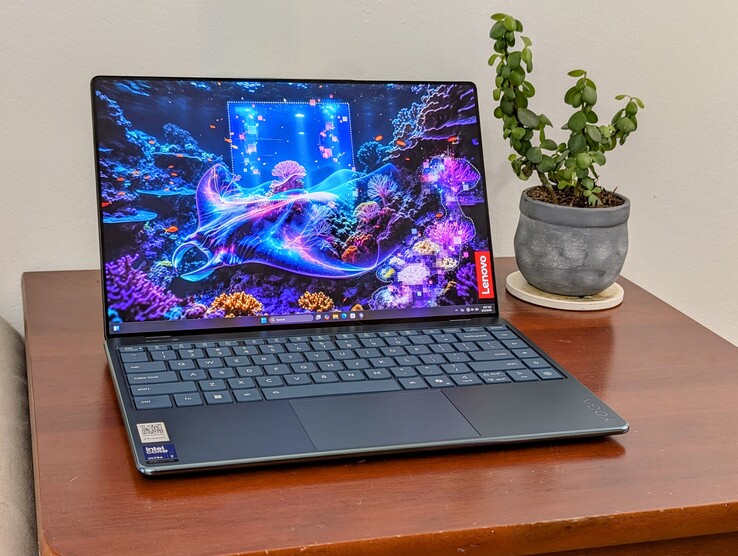
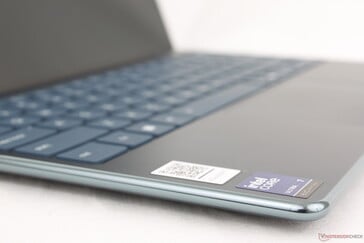
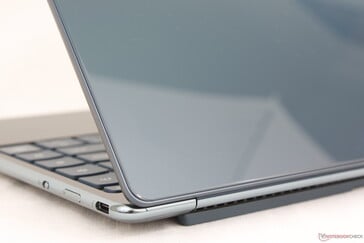
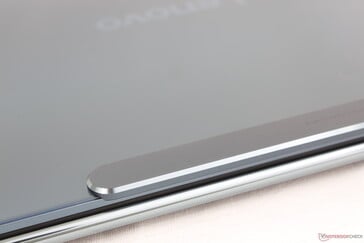
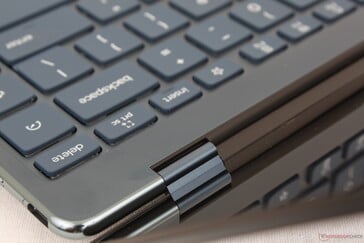
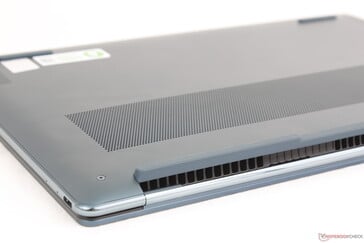





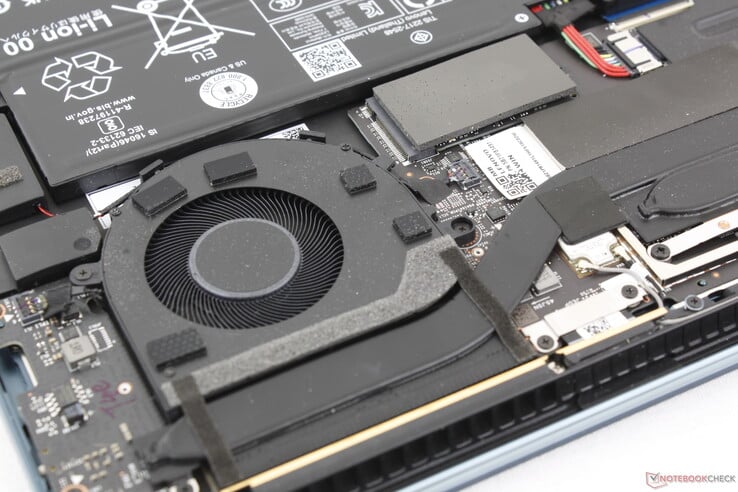
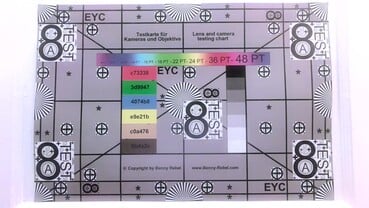

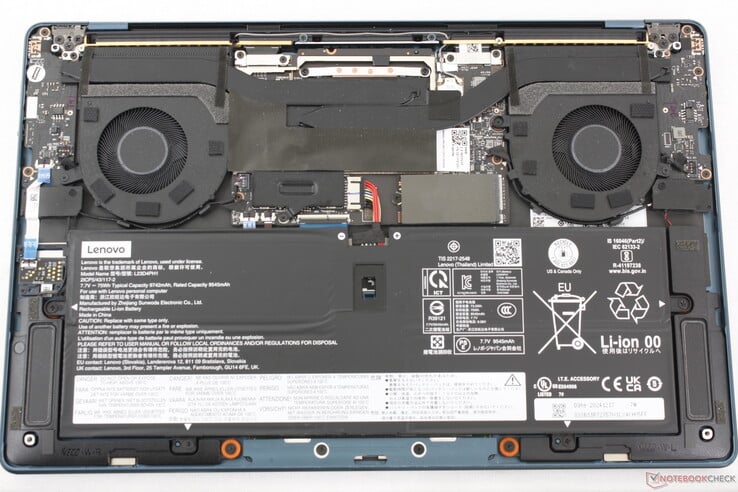
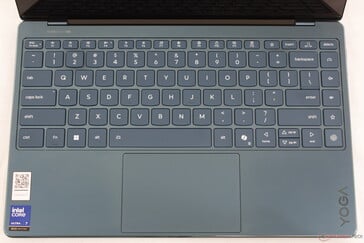
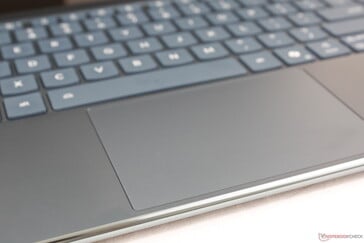


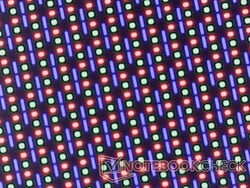
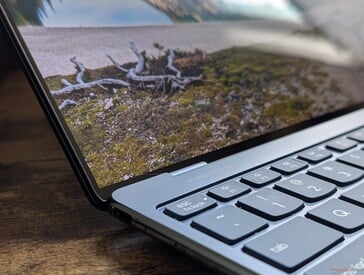


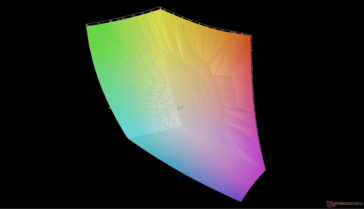
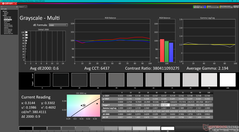
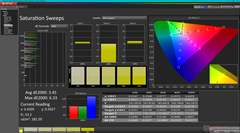
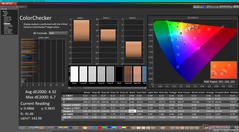
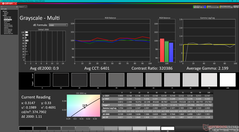
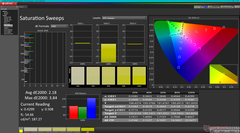
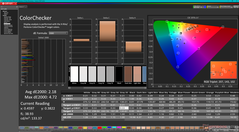
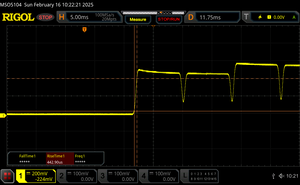

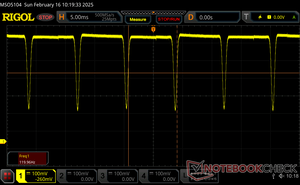







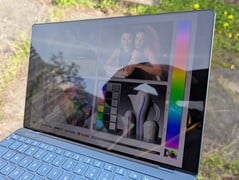

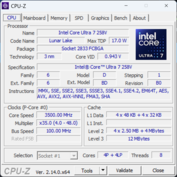
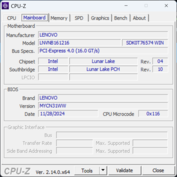
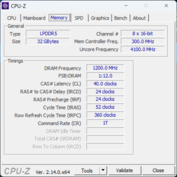
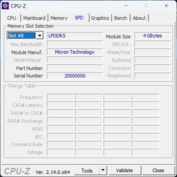
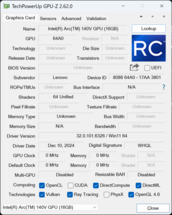
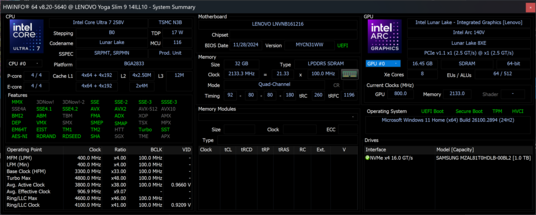
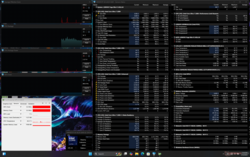
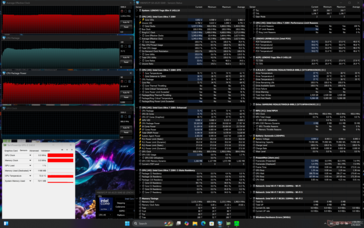
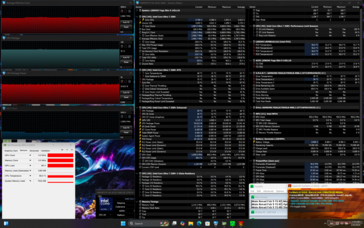
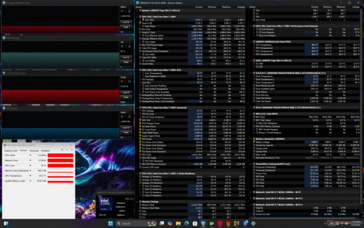
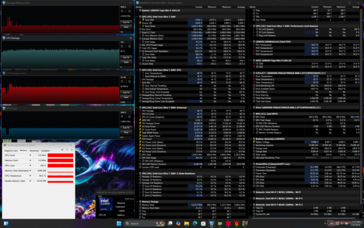
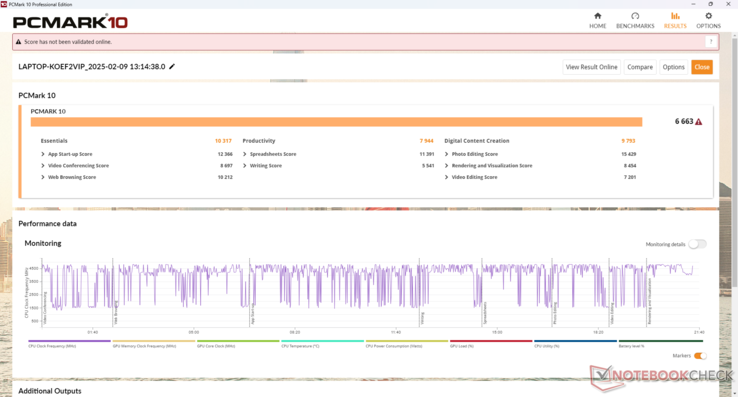
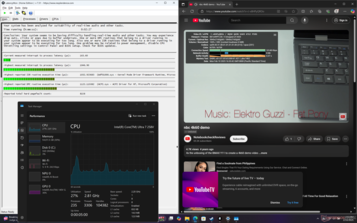
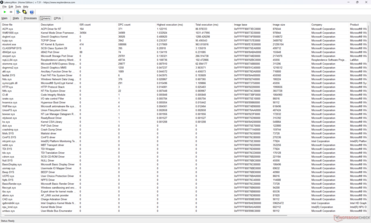
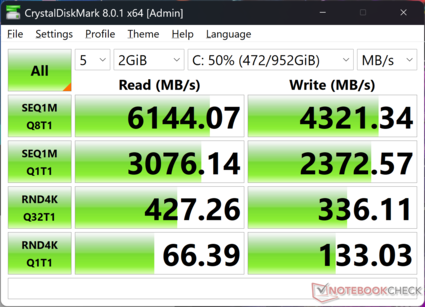
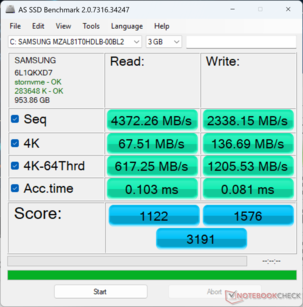
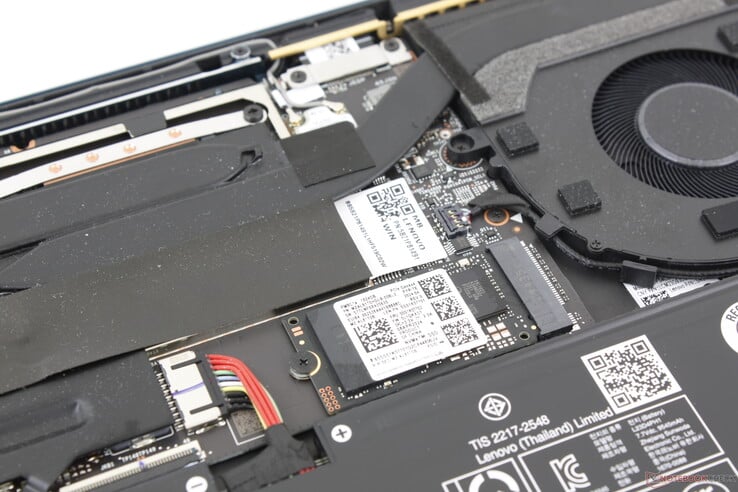

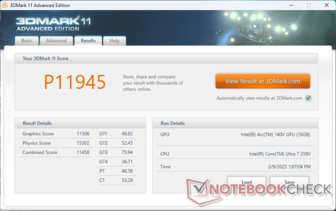
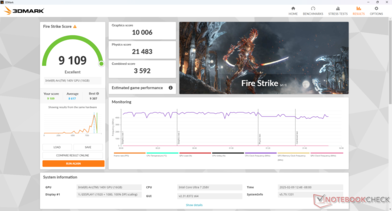
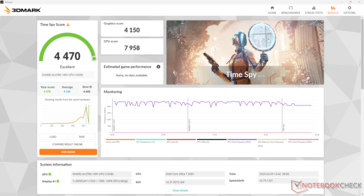
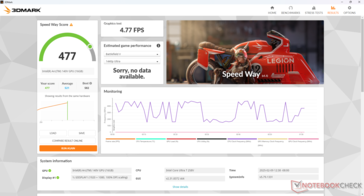

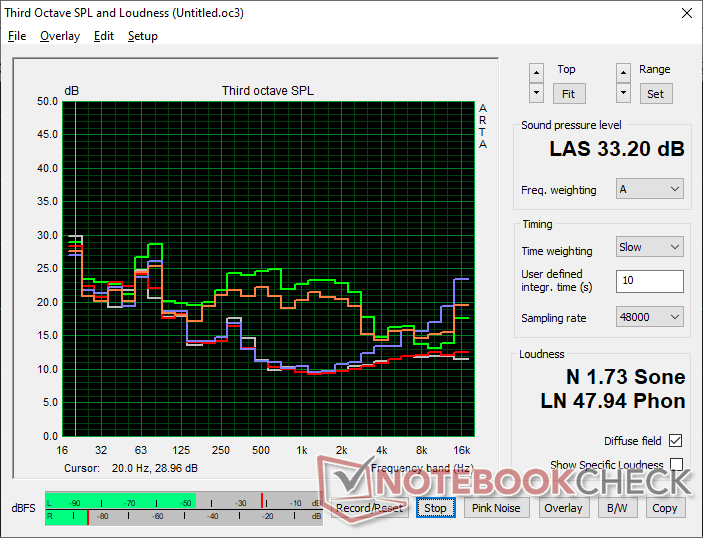
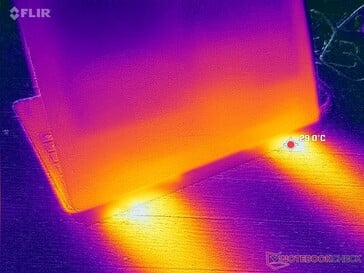
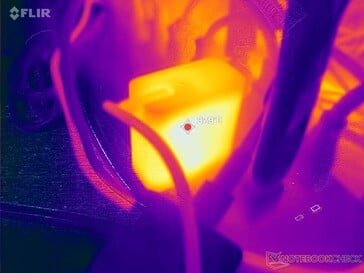
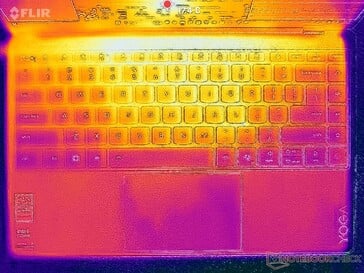
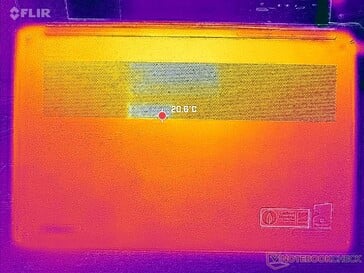

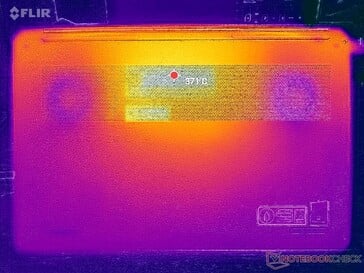
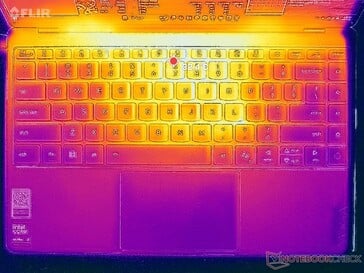
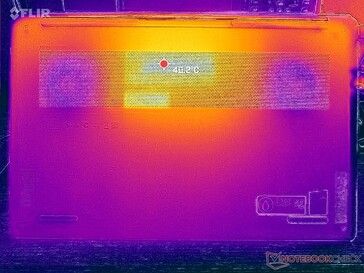
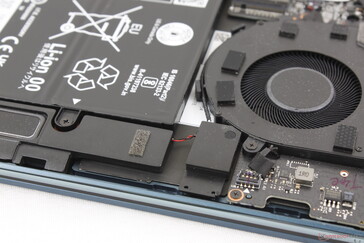
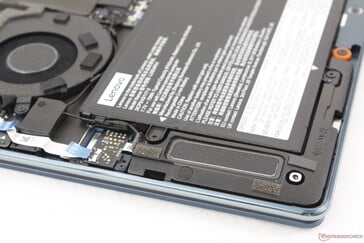
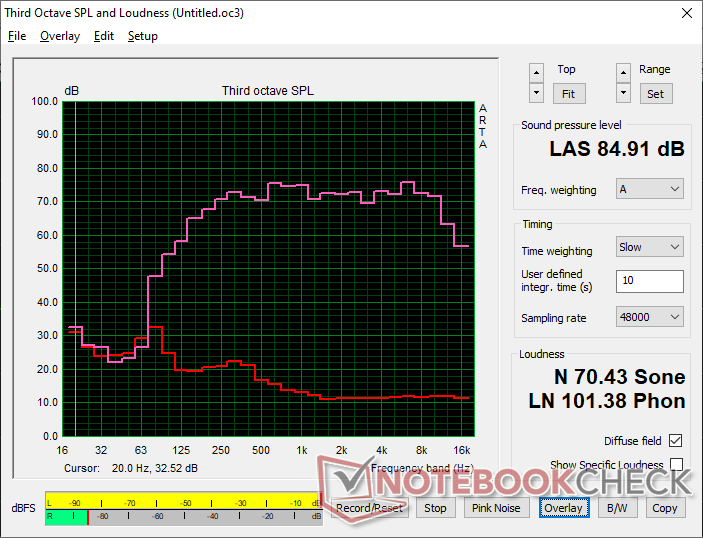
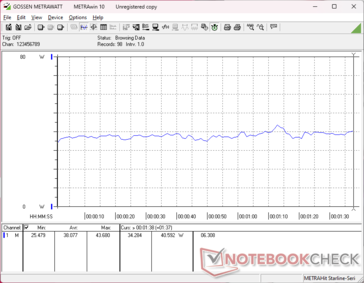
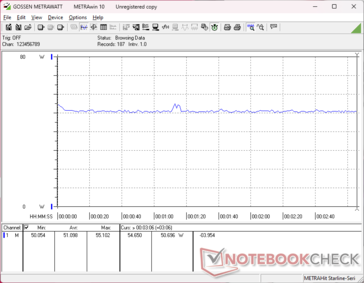
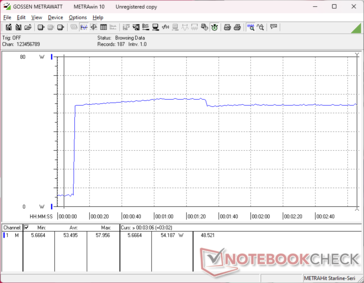
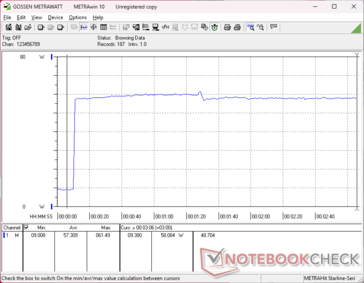
 Total Sustainability Score:
Total Sustainability Score: 








